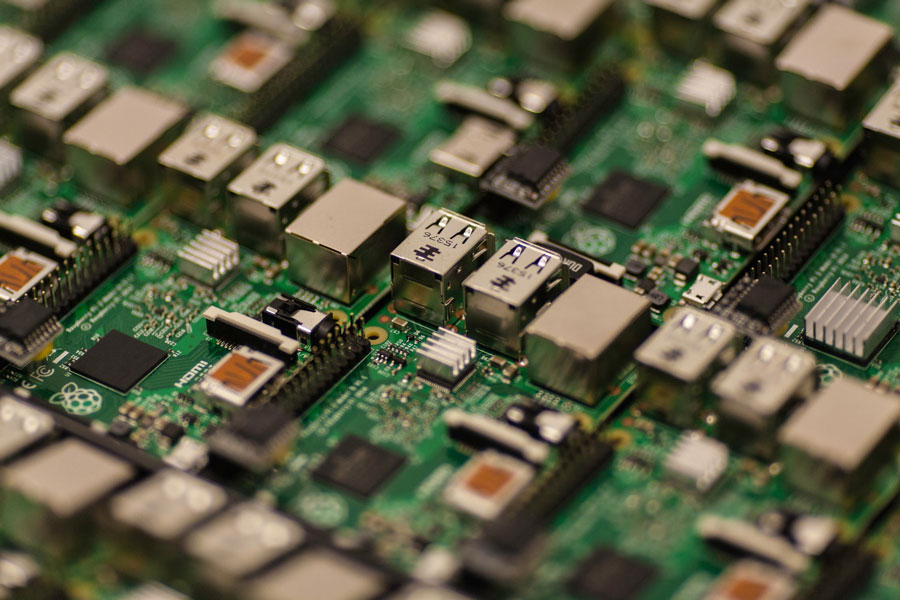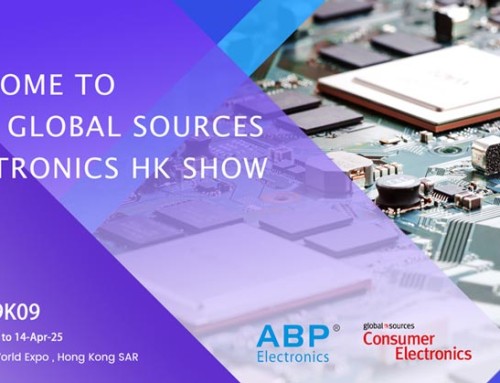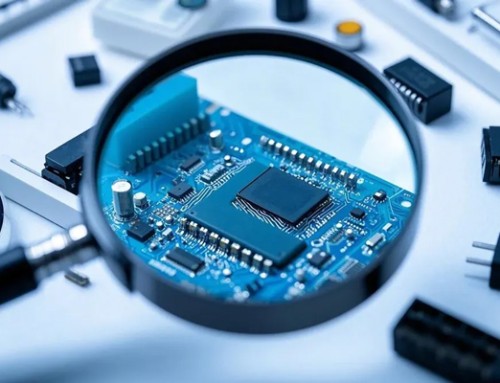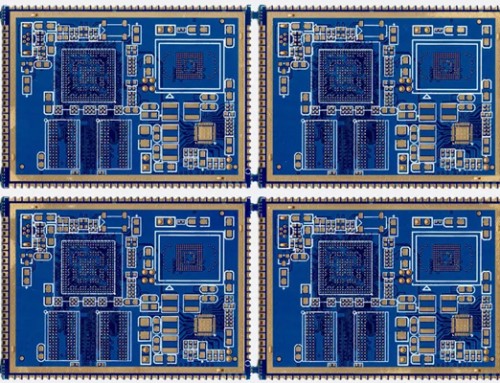When creating surface finishes for printed circuit boards (PCBs), you can choose from either organic or metallic materials. Knowing which types of surface finishes exist is simple enough, but how do you determine which is best for your printed circuit board? They share similarities, but each comes with its own benefits, disadvantages and technical considerations.
If you’re wondering how to select the right finishing technique, this article can help you learn more about three common types — Hot Air Solder Leveling (HASL), Organic Solderability Preservative (OSP) and Electroless Nickel Immersion Gold (ENIG).
1. HASL and Lead-Free HASL of Printed Circuit Board
A HASL surface finish offers high-quality solderability and accommodates multiple thermal cycles while also being one of the more affordable options. It once served as the industry standard, although standards under the Restriction of Hazardous Substances (RoHS) have caused HASL to fall out of compliance. In turn, lead-free HASL has become the more acceptable option in terms of its environmental and health impacts. Although HASL has a long industry history and is well-known among engineers, lead-free HASL is safer to use and better fits the needs of directives like RoHS.
HASL finishes are created by dipping the board into a tin and lead or tin and nickel solder and holding it there for some time. Once the PCB is removed, hot bursts of air called air knives remove the excess finish. HASL finishing allows for a large processing window, but various factors can affect its evenness and therefore its solderability. The angle of the air knives, the air pressure and the speed of the PCB board’s entry and removal from the solder all influence the finish’s quality.
You’ll find HAL and lead-free HASL surface finishes used for applications such as:
Electrical testing: HASL finishes provide automatic protection for the test pads and vias during electrical testing of the circuit boards.
Hand soldering: HASL finishes are a suitable option for hand soldering processes, as the joints are easily formable.
High-performance electronics: HASL is often a great choice for high-performance and high-reliability applications, like aerospace and military devices, because of its ability to form strong joints.
2. OSP of Printed Circuit Board
An OSP surface finish is an example of an organic PCB finish. There are no toxins involved in the process, making it environmentally friendly while still retaining its protective and anti-corrosive properties. Because of the absence of harmful chemicals, OSP boards are also RoHS compliant. This water-based finish provides a flat surface for attaching additional PCB components, and like the HASL process, it is cost-effective.
OSP can be used as an effective replacement for lead-free HASL due to its co-planarity. When you need a PCB surface finish that will provide sufficient flatness while offering a simple manufacturing process, OSP is arguably the best choice.
Applying an OSP surface finish to a PCB usually involves a conveyorized chemical method or a vertical dip tank. The process generally looks like this, with rinses between each step:
Cleaning: The copper surface of the PCB is cleaned of oil, fingerprints and other contaminants that could affect the flatness of the applied finish.
Topography enhancement: The exposed copper surface undergoes micro-etching to increase the bond between the board and the OSP. This process also reduces oxidation. To achieve adequate film thickness, the micro-etching must be kept at a consistent speed.
Acid rinse: The PCB undergoes an acid rinse in a sulfuric acid solution.
OSP application: At this point in the process, the OSP solution is applied to the PCB.
Deionization rinse: The OSP solution is infused with ions to allow for easy elimination during soldering. This rinse should be used before preservatives build to avoid tarnishing from the presence of other ions in the OSP solution.
Dry: After the OSP finish is applied, the PCB must be dried.
OSP offers a simple and affordable process, but it’s also important to keep in mind that it’s extremely sensitive to handling and can easily retain scratches, which can degrade its solderability. Additionally, its shelf life is shorter than that of ENIG or HASL.
Common uses for OSP include:
Fine pitch devices: This finish is best to apply to fine pitch devices because of the lack of co-planar pads or uneven surfaces.
Server boards: OSP’s uses range from low-end applications to high-frequency server boards. This wide variation in usability makes it suitable for numerous applications. It’s also often used for selective finishing.
Surface mount technology (SMT): OSP works well for SMT assembly, for when you need to attach a component directly to a PCB’s surface.
3. ENIG of Printed Circuit Board
Despite the higher pricing of ENIG surface finishing, it has a high success rate for producing high-quality products. It holds up under multiple thermal cycles, showcases great solderability and is a suitable option for wire bonding. As the name suggests, it consists of two coating layers — nickel and gold. The nickel protects the base copper layer and enables secure attachment of electrical components, while the gold serves as an anti-corrosion measure for the nickel.
ENIG can be used in situations where tight tolerances are required for PCB elements like plated holes, as HASL is not as effective for this. Like OSP, it offers excellent flatness and is ideal for fine pitch devices.
Applying the ENIG coating requires nickel to be deposited onto a copper surface catalyzed with palladium. The immersion gold stage causes the gold to adhere to the nickel by way of a molecular exchange. ENIG is similar to OSP in its inclusion of micro-etching and rinsing between each stage — the process includes these steps:
Cleaning.
Micro-etching.
Pre-dipping.
Applying the activator.
Post-dipping.
Applying the electroless nickel.
Applying the immersion gold.
Standard applications for an ENIG surface finish include:
Complex surface components: Because of its flat surface, this finish type is a preferable choice for complex PCB components requiring smooth surfaces, like ball grid arrays (BGAs) or quad flat packages (QFPs).
Wire bonding: ENIG finishes allow for minimal wire bonding for aluminum wires, although they are not compatible with gold.
High reliability applications: You will often find ENIG surface finishes used for PCBs in industries such as aerospace, military, medical and high-end consumers. Its quality makes it suitable for applications where precision and durability are vital.
[/fusion_text][/fusion_builder_column][/fusion_builder_row][/fusion_builder_container]




